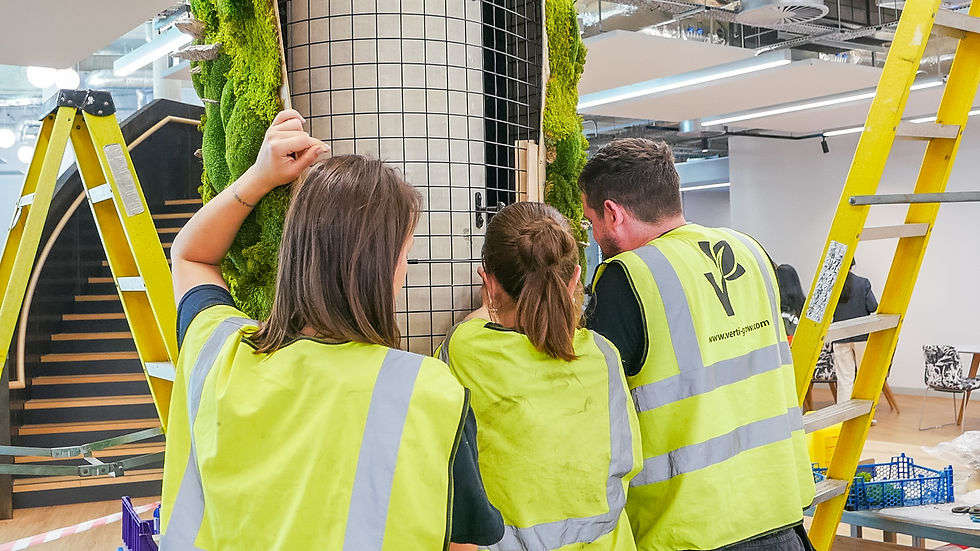Who is a Biophilic Design Specialist?
- Verti - Grow
- Apr 29, 2024
- 2 min read
Updated: May 9, 2024
In today’s fast-paced world, where concrete jungles dominate the landscape, there’s a growing recognition of the importance of reconnecting with nature in our built environments.

The Biophilic Design Specialist – a professional dedicated to infusing spaces with the essence of nature to enhance well-being, productivity, and sustainability. But who exactly is a Biophilic Design Specialist, and what do they bring to the table?
At its core, biophilic design is a holistic approach that seeks to integrate natural elements, patterns, and processes into the built environment, fostering a deep connection between people and nature. A Biophilic Design Specialist is someone who possesses both a passion for nature and a keen understanding of design principles, blending art and science to create harmonious spaces.

One of the key roles of a Biophilic Design Specialist is to collaborate closely with Architects, Interior Designers, Landscapers, and other stakeholders to incorporate biophilic elements into various projects. This collaboration is essential for ensuring that biophilic principles are seamlessly integrated into the overall design, whether it’s a residential home, office building, school, or public park.
So, what exactly sets a Biophilic Design Specialist apart from other design professionals? Firstly, they have a deep understanding of the science behind biophilia – the innate human tendency to seek connections with nature. Drawing on research from fields such as psychology, biology, and environmental science, they leverage this knowledge to inform their design decisions.

Secondly, a Biophilic Design Specialist possesses a creative flair for translating biophilic principles into tangible design solutions. Whether it’s incorporating natural materials like wood and stone, maximizing natural light, or creating indoor green spaces, they have a knack for bringing the outdoors inside in innovative ways.
Moreover, a Biophilic Design Specialist is committed to sustainability and environmental stewardship. By prioritizing materials that are eco-friendly and low-impact, they strive to minimize the environmental footprint of their projects while maximizing their positive impact on occupants’ well-being.

In addition to their technical expertise, Biophilic Design Specialists also excel in communication and collaboration. They understand the importance of listening to clients’ needs and preferences, while also educating them about the benefits of biophilic design. Through effective communication and collaboration, they ensure that clients are fully engaged in the design process and are satisfied with the end result.
Ultimately, the work of a Biophilic Design Specialist extends far beyond creating aesthetically pleasing spaces. It’s about fostering connections – between people and nature, between individuals and their surroundings, and between different stakeholders involved in the design process. By harnessing the power of biophilic design, they have the potential to transform our built environment into healthier, happier, and more sustainable spaces for all.

In conclusion, a biophilic design specialist is not just a designer – they’re a visionary, a collaborator, and a steward of nature. With their unique blend of creativity, expertise, and passion, they play a vital role in shaping the future of design, one green space at a time. So, the next time you step into a space that feels like a breath of fresh air, remember to thank the biophilic design specialist
behind it.






Comments